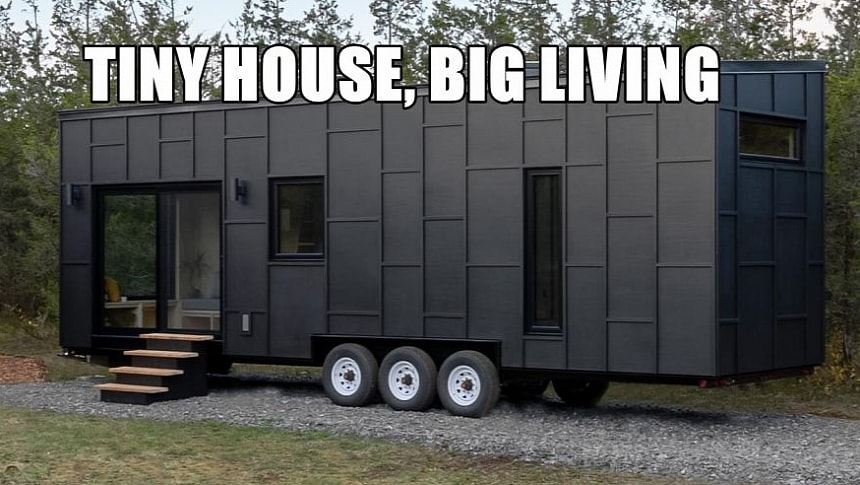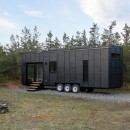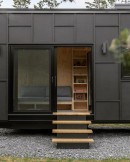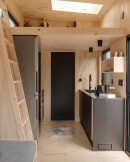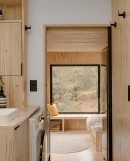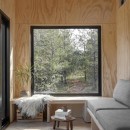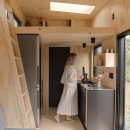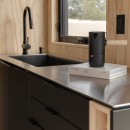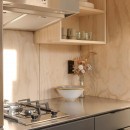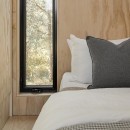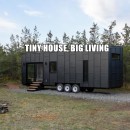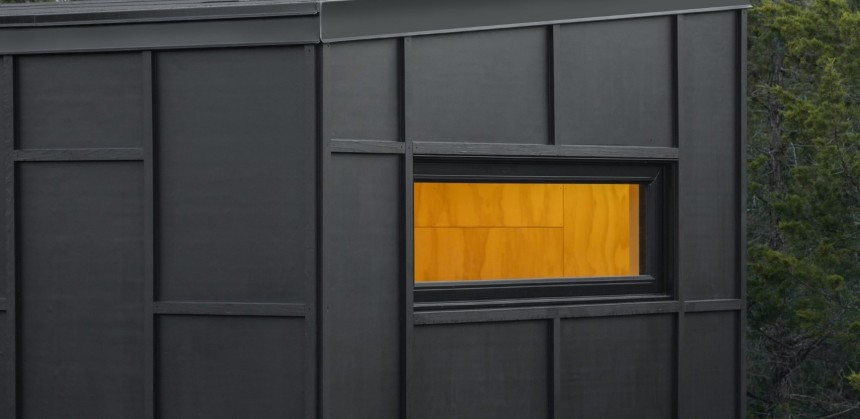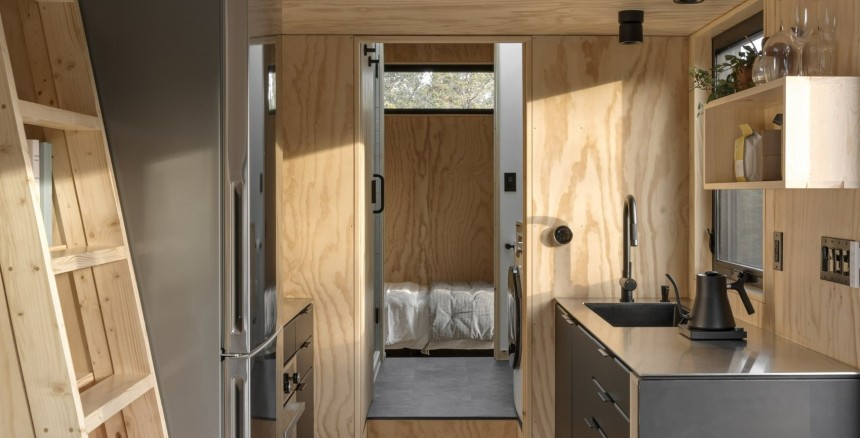All this talk about sustainability, intentional living, de-cluttering your life, and other such hippie-sounding motivational phrases in relation to the tiny house movement might get you to believe that only the most basic, smallest, uncomplicated, and uncomfortable would do. You'd be wrong.
Tiny houses have come a long way from where they started, and not just in terms of the many miles the people living in them have covered since. Tiny houses, once desirable only for hipsters looking to reduce their carbon footprint by ditching all the comforts of modern life, are now basking in the spotlight as solid alternatives to traditional housing solutions.
Because they're built on trailers of various sizes, tiny houses can still accomplish that coveted reduction of the carbon footprint, but their biggest appeal remains their mobility. At the same time, they also promise reduced costs overall, more independence, higher affordability, and – somehow paradoxically – more comfort than city apartments. Indeed, tiny houses have come a very long way.
The P01 is a very good example of that. It's the only model of tiny offered right now by Canada-based Instead Tiny Homes, and it served as a residential unit for one of the company's co-founders for several years. Having proven its reliability and applicability in real life, it's been turned into the first series-produced model. The original unit is also offered for sale, if you're into pre-loved stuff.
This is not some kind of disguised pitch, though. Whether you're considering downsizing or not, the P01 still serves as a good example of how tiny living has evolved from its initial premise to include off-grid features and heightened comfort in more or less the same compact footprint. Sustainability is still a core value, but it's repackaged in a way that doesn't sacrifice convenience or even luxury, albeit a slightly modified version of it.
The P01 sits on a triple-axle trailer and has a total length of 32 feet, with a width of 8.5 feet and a height of 13.5 feet (9.7 by 2.5 by 4.2 meters). Its dimensions make it fully road-legal without special permits and RV-certified, which means living in it permanently is subject to national and local regulations and bylaws. In an ideal world in which tiny houses are legal, the P01 would roam wherever the owner's heart desired.
Designed as a family mobile home, this unit features a sleek and somehow surprising stark exterior in black corrugated steel, offset by an interior finished exclusively in pine wood in its natural shade. The same contrast is maintained inside through the use of color-blocking pieces of furniture and appliances (the kitchen is all dark, for example), but the vibe of the home is airy and relaxed.
These are qualities any family home should have. Founder Lee Loewen and his business partner Payam Shalchian designed it because they'd grown "tired of disposable consumerism" and because they wanted a self-contained haven that was also mobile.
In a surface of just 262 square feet (24.3 square meters), they believe they were able to pack everything needed to live comfortably on an everyday basis, down to an in-built dishwasher and a washer/dryer combo, two bedrooms, and ample storage space.
The layout is somehow uncommon on the tiny house market, with the main bedroom on the ground floor, at one end of the trailer, and a small loft in the center, over the kitchen. That loft can be used as a bedroom because it's large enough to fit a queen-size mattress, airy, and well-lit, thanks to an opening skylight.
The bathroom serves as a physical divider between the main living area (the open-plan kitchen and the living room) and this private space. Large windows create the impression of much larger spaces, but it helps to have a clear definition between the rooms – which, again, is not something most tinies have.
The highest selling point of the P01 is the focus on quality, both in terms of the materials used and the work done. It translates into features like a multi-zone radiant heating system, a mini-split for AC and heat, water filtration, a 40-gallon (151-liter) electric hot water tank, and hybrid insulation (mineral wool, closed-cell foam spray, and ZIP-system R9 rigid exterior insulation) that renders it suitable for all-year use even in the cold Canadian winter.
Instead Tiny Homes offers the P01 either with an all-electric 240V/50A or an electric-propane hybrid system and a string of optionals that further customize it or upgrade existing features, such as a propane furnace for extra heat. The original P01, the one that's being offered for sale now, was specced with 4,000W of solar on the roof and a 2,000-gallon (7,571-liter) water tank for extended autonomy, but these aren't included in the base asking price.
Since we're on the topic, that asking price is CAD189,000, which is roughly US$140,000 at the current exchange rate.
For this money, you get a turnkey unit that "lives big" despite the small footprint and is focused on quality and sustainability. But you don't get the solar system, the storage water tank, or features like a dishwasher or washing machine, and shipping costs. If you really want to go off the grid like Lee and his family did for a few years in the P01, it'll cost you even more, which again brings us back to the discussion on how tiny houses remain ridiculously priced.
That much is true, just like it's true that inflated prices are boosted by the spike in demand and geopolitical factors that made prices for materials go up. But Lee would like to stress that it's still less than what you'd have to pay for a home in the same area of Canada – Prince Edward County – where he lives, where the residential average price is CAD804,616 (US$593,000).
In the end, everything is relative, as Einstein taught us.
Because they're built on trailers of various sizes, tiny houses can still accomplish that coveted reduction of the carbon footprint, but their biggest appeal remains their mobility. At the same time, they also promise reduced costs overall, more independence, higher affordability, and – somehow paradoxically – more comfort than city apartments. Indeed, tiny houses have come a very long way.
The P01 is a very good example of that. It's the only model of tiny offered right now by Canada-based Instead Tiny Homes, and it served as a residential unit for one of the company's co-founders for several years. Having proven its reliability and applicability in real life, it's been turned into the first series-produced model. The original unit is also offered for sale, if you're into pre-loved stuff.
The P01 sits on a triple-axle trailer and has a total length of 32 feet, with a width of 8.5 feet and a height of 13.5 feet (9.7 by 2.5 by 4.2 meters). Its dimensions make it fully road-legal without special permits and RV-certified, which means living in it permanently is subject to national and local regulations and bylaws. In an ideal world in which tiny houses are legal, the P01 would roam wherever the owner's heart desired.
Designed as a family mobile home, this unit features a sleek and somehow surprising stark exterior in black corrugated steel, offset by an interior finished exclusively in pine wood in its natural shade. The same contrast is maintained inside through the use of color-blocking pieces of furniture and appliances (the kitchen is all dark, for example), but the vibe of the home is airy and relaxed.
In a surface of just 262 square feet (24.3 square meters), they believe they were able to pack everything needed to live comfortably on an everyday basis, down to an in-built dishwasher and a washer/dryer combo, two bedrooms, and ample storage space.
The layout is somehow uncommon on the tiny house market, with the main bedroom on the ground floor, at one end of the trailer, and a small loft in the center, over the kitchen. That loft can be used as a bedroom because it's large enough to fit a queen-size mattress, airy, and well-lit, thanks to an opening skylight.
The highest selling point of the P01 is the focus on quality, both in terms of the materials used and the work done. It translates into features like a multi-zone radiant heating system, a mini-split for AC and heat, water filtration, a 40-gallon (151-liter) electric hot water tank, and hybrid insulation (mineral wool, closed-cell foam spray, and ZIP-system R9 rigid exterior insulation) that renders it suitable for all-year use even in the cold Canadian winter.
Instead Tiny Homes offers the P01 either with an all-electric 240V/50A or an electric-propane hybrid system and a string of optionals that further customize it or upgrade existing features, such as a propane furnace for extra heat. The original P01, the one that's being offered for sale now, was specced with 4,000W of solar on the roof and a 2,000-gallon (7,571-liter) water tank for extended autonomy, but these aren't included in the base asking price.
For this money, you get a turnkey unit that "lives big" despite the small footprint and is focused on quality and sustainability. But you don't get the solar system, the storage water tank, or features like a dishwasher or washing machine, and shipping costs. If you really want to go off the grid like Lee and his family did for a few years in the P01, it'll cost you even more, which again brings us back to the discussion on how tiny houses remain ridiculously priced.
That much is true, just like it's true that inflated prices are boosted by the spike in demand and geopolitical factors that made prices for materials go up. But Lee would like to stress that it's still less than what you'd have to pay for a home in the same area of Canada – Prince Edward County – where he lives, where the residential average price is CAD804,616 (US$593,000).
In the end, everything is relative, as Einstein taught us.
